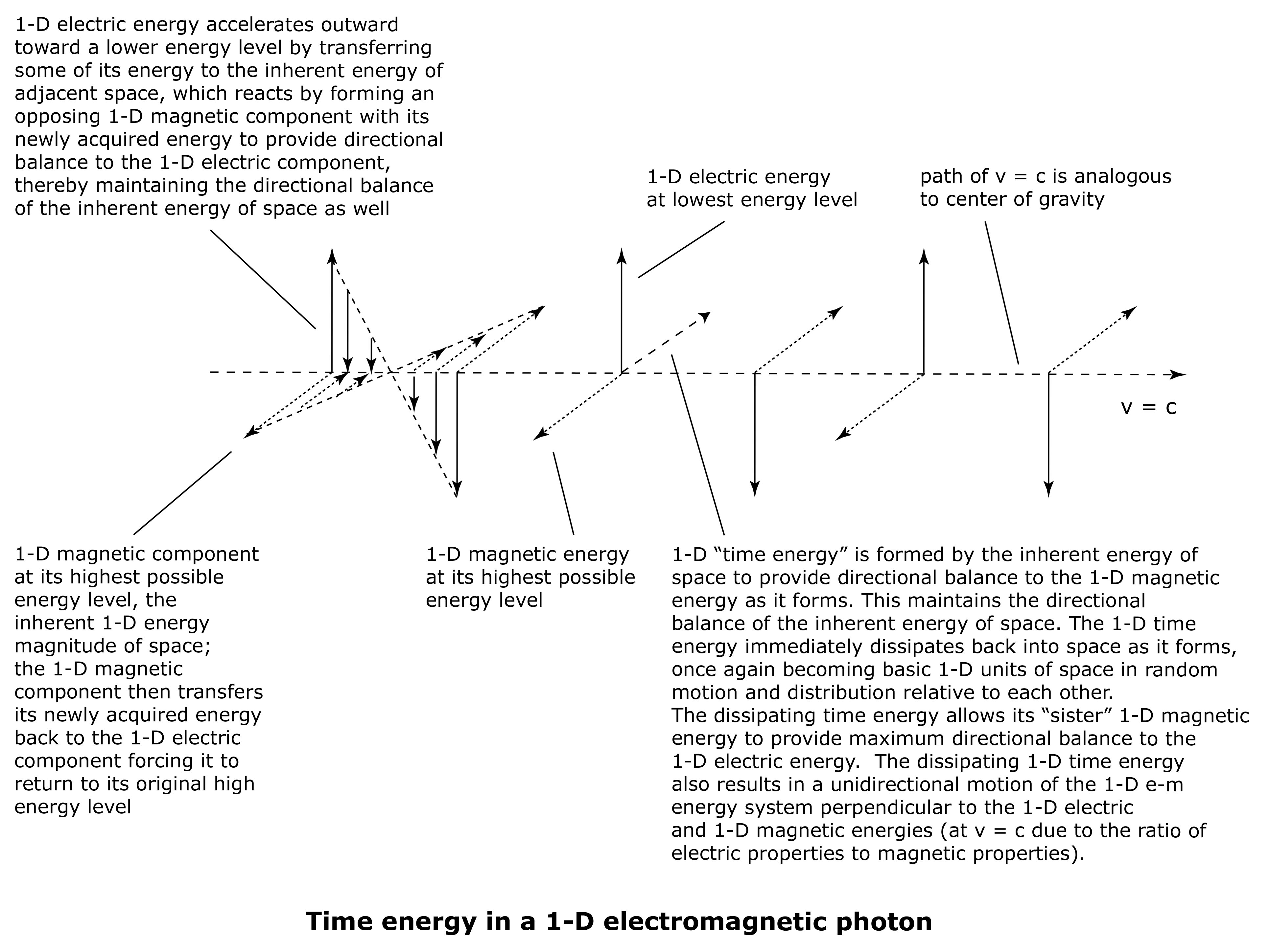 As the inherent energy of space forms a 1-D magnetic energy to provide directional balance to the 1-D electric energy, the energy of space also forms an equal and opposing 1-D “time” energy at 180 degrees to the 1-D magnetic energy to provide directional balance to the formation of the unidirectional magnetic energy.
As the inherent energy of space forms a 1-D magnetic energy to provide directional balance to the 1-D electric energy, the energy of space also forms an equal and opposing 1-D “time” energy at 180 degrees to the 1-D magnetic energy to provide directional balance to the formation of the unidirectional magnetic energy.
As time forms at 180 degrees to its ‘sister’ magnetic energy, it immediately dissipates back into space, once again becoming random energy. This provides directional balance to the formation of the 1-D magnetic energy, while allowing the 1-D magnetic energy to provide maximum directional balance to the 1-D electric energy. In addition, the immediate dissipation of time energy back into the energy of space results in a unidirectional motion of the 1-D electromagnetic (e-m) energy system since the dissipation of time energy is itself unidirectional, like a zipper opening as it forms. The resulting path of the 1-D e-m energy system moves at v = c due to the ratio of electric properties to magnetic properties.
Since time is a product of electromagnetic interactions, time (as we experience it) cannot exist without electromagnetic interactions. This does not mean that sequential “events” cannot occur. It means that events or actions occurring without electromagnetic interactions must consist of perfect randomness so that when an action occurs, somewhere in the system an equal and opposing action occurs so that no net event has taken place. This type of system (for instance, space with no unidirectional energy in the system), would represent optimal directional balance. It may not be possible, from our electromagnetic frame of reference, to describe space in the absence of electromagnetic energy or time.
An illustration of 1-D time energy in a 1-D electromagnetic energy system (photon) is given below.
